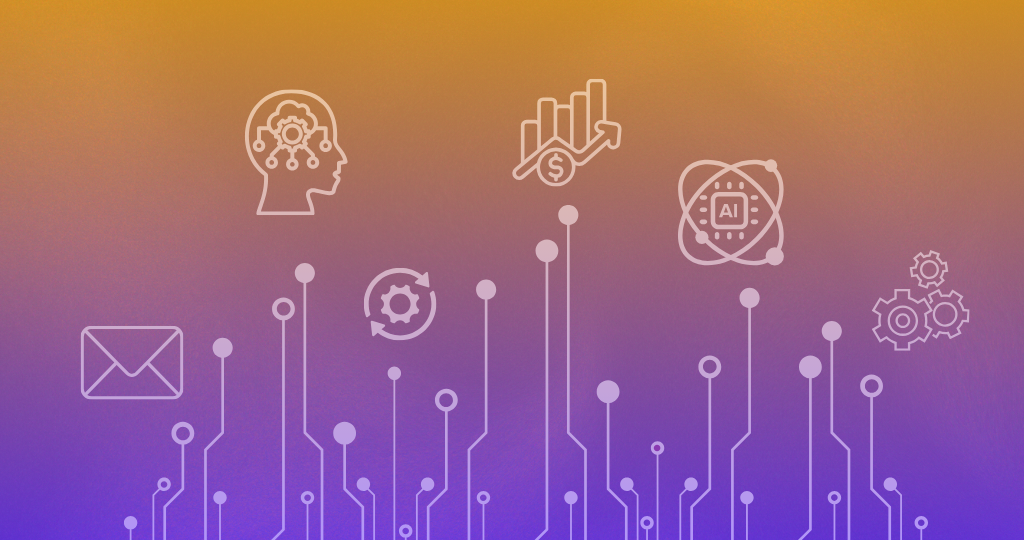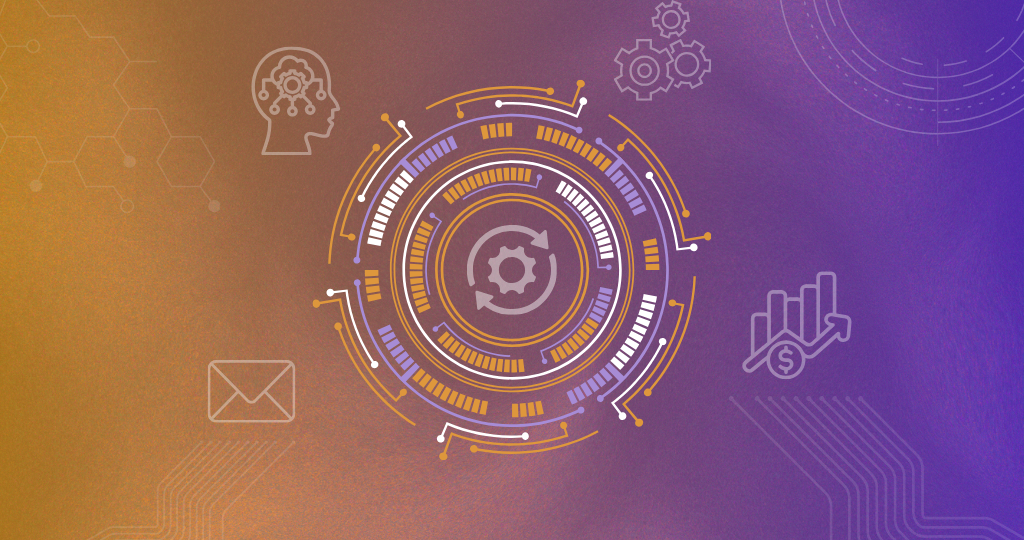Automating Customer Journeys: The Key to Better Customer Experiences
In today’s highly competitive market, providing a seamless and engaging customer experience is essential to winning and retaining customers. But managing every touchpoint manually—especially as your customer base grows—can be overwhelming. That’s where automation comes in. Automating customer journeys allows businesses to deliver personalised, timely, and relevant experiences at scale, ensuring that customers are engaged, nurtured, and supported throughout their journey.
In this blog, we’ll explore how automating customer journeys can enhance the customer experience and provide practical tips on how to implement automation into your own processes.
What Is a Customer Journey?
A customer journey refers to the entire process a customer goes through when interacting with your brand, from the first touchpoint to post-purchase engagement. It includes every interaction, whether visiting your website, receiving marketing emails, engaging with customer support, or following up on social media.
A well-designed customer journey considers the customer’s needs, preferences, and behaviours at every stage, ensuring that they receive the right message through the right channel at the right time.
However, manually managing these touchpoints is inefficient and time-consuming. By automating the customer journey, businesses can create consistent, personalised experiences while freeing up resources to focus on other tasks.
Why Automate the Customer Journey?
Automation allows businesses to streamline the customer journey by handling repetitive tasks, triggering actions based on customer behaviour, and ensuring timely follow-ups—all without manual intervention.
Key Benefits of Automating the Customer Journey:
- Personalisation at Scale: Automation allows you to tailor messages, content, and offers to individual customers based on their preferences and behaviour.
- Improved Engagement: Automated follow-ups and touchpoints ensure that customers stay engaged with your brand at every stage of the journey.
- Consistency: Automating key steps ensures that no customer falls through the cracks, providing a consistent experience for every customer.
- Time Savings: By automating repetitive tasks, your team can focus on higher-value activities like building relationships and improving product offerings.
- Higher Conversion Rates: By delivering the right message at the right time, automation can help convert more leads into customers.
Key Stages of the Customer Journey to Automate
Automation can be applied at every customer journey stage, from awareness to advocacy. Let’s break down how you can automate key steps at each stage to create a better customer experience.
1. Awareness Stage: Attracting New Prospects
In the awareness stage, your goal is to capture the attention of potential customers and introduce them to your brand. Automation can help you identify and engage with these prospects through targeted content and lead-generation strategies.
How to Automate:
- Lead Generation Forms: Use automated lead capture forms on your website to gather information about visitors. Tools like HubSpot can automatically segment leads and trigger follow-up actions based on the form data.
- Content Delivery: Automate the delivery of content, such as blog posts or whitepapers, to new leads via email or social media channels. This keeps your brand top of mind and encourages further engagement.
- Ad Retargeting: Use AI to automatically retarget ads to visitors who have interacted with your website but haven’t yet converted. Retargeting ensures they continue to see your brand across different platforms.
2. Consideration Stage: Nurturing Leads
In the consideration stage, prospects are evaluating your product or service against competitors. This is where nurturing becomes crucial, and automation can help you deliver personalised content that guides leads toward a decision.
How to Automate:
- Email Nurturing Campaigns: Use automation to send a sequence of personalised emails based on a lead’s actions. For example, if a prospect downloads a pricing guide, trigger an email with a case study relevant to their industry.
- Behaviour-Triggered Messages: Automate follow-up messages based on specific behaviours, such as revisiting your website or opening a particular email. These triggers ensure that you engage with leads at the right time.
- Chatbots: Implement AI-powered chatbots that can answer questions in real-time, provide product recommendations, and guide leads to the next step, all while qualifying them for your sales team.
3. Decision Stage: Driving Conversions
The decision stage is when prospects are ready to make a purchase, but they may need an extra push to finalise their decision. Automation can help provide the final information, incentives, or personalisation to close the deal.
How to Automate:
- Dynamic Product Recommendations: Use AI to recommend products or services based on a lead’s browsing history or past interactions. Personalised recommendations can increase the likelihood of conversion.
- Abandoned Cart Emails: If a customer adds an item to their cart but doesn’t complete the purchase, set up an automated email reminder with a discount or incentive to encourage them to return and finish the transaction.
- Sales Follow-Up: Automate personalised follow-ups for prospects who have shown high engagement, such as those who have requested a demo or viewed your pricing page multiple times.
4. Retention Stage: Post-Purchase Engagement
Once a customer makes a purchase, the journey doesn’t end. In the retention stage, automation can help you build long-term relationships with your customers, encourage repeat purchases, and keep them engaged with your brand.
How to Automate:
- Onboarding Sequences: Automate a series of onboarding emails or product tutorials that help new customers get the most out of their purchase. These emails can include tips, resources, and best practices.
- Customer Feedback Requests: Set up automated surveys or feedback requests to gather insights into the customer experience. This not only helps you improve your product but also shows customers that you value their input.
- Loyalty Programs: Automate rewards and incentives for repeat purchases or referrals. AI can track customer activity and trigger loyalty offers based on their purchasing behaviour.
5. Advocacy Stage: Turning Customers into Promoters
The final stage of the customer journey is advocacy, where your customers become brand ambassadors. Automation can help you nurture these relationships and encourage customers to promote your brand to others.
How to Automate:
- Referral Programs: Use automation to invite satisfied customers to join a referral program. Send automated emails offering rewards for referring friends or family, and track referral activity with AI tools.
- Review Requests: Automate requests for reviews and testimonials from happy customers. Once a customer has made multiple purchases or provided positive feedback, trigger an email asking them to leave a review on a third-party site.
- Social Media Engagement: Use automation to encourage customers to share their experience on social media, offering incentives or rewards for each post or mention.
How to Implement Customer Journey Automation
Now that you understand the key stages of the customer journey to automate, it’s time to implement automation into your business.
1. Choose the Right Tools
There are many AI-powered automation tools available to help streamline your customer journey. Tools like HubSpot, ActiveCampaign, and Zapier allow you to automate email sequences, lead scoring, and follow-up actions.
2. Start Small
If you're new to automation, start with one or two key tasks, such as setting up an automated email sequence for new leads or triggering follow-up messages based on behaviour. As you become more comfortable with automation, you can expand to other areas of the customer journey.
3. Test and Refine
Automation is not a set-and-forget process. Regularly review your automated workflows to ensure they’re effective. Look at metrics like open rates, click-through rates, and conversions to identify areas for improvement.
4. Personalise Your Approach
The best customer experiences are personalised. Use AI and automation to tailor messages, content, and recommendations to individual customer preferences and behaviours.
Automating Customer Journeys for Success
Automating customer journeys is the key to delivering better, more personalised customer experiences at scale. By implementing automation at every stage of the customer journey—from lead generation to advocacy—you can save time, increase engagement, and drive higher conversions.
Ready to automate your customer journey? Start by mapping out your current customer interactions and identifying areas where automation can enhance the experience. With the right tools and strategies, you can build a seamless, AI-powered customer journey that delivers value for both your business and your customers.
From the blog


